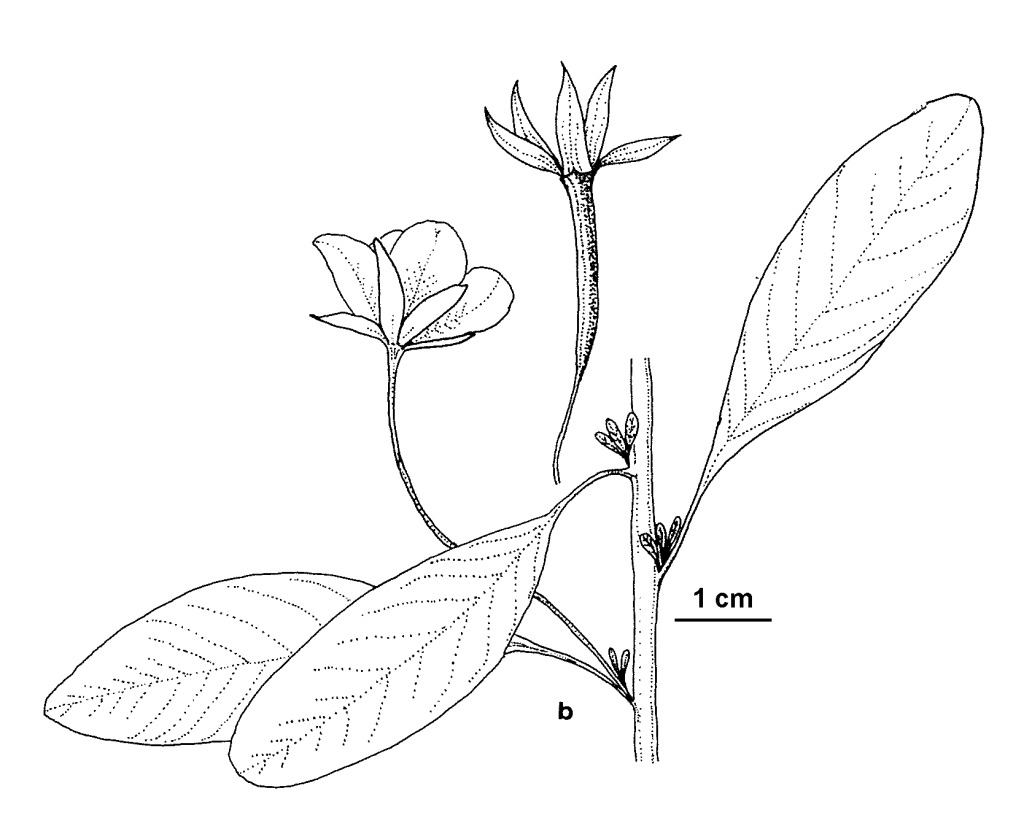Ludwigia peploides subsp. montevidensis
(Spreng.) P.H.Raven Water PrimroseProstrate perennial herb, pubescent; branches to 2 m long, rooting at nodes or floating, stems ascending when in flower; submerged parts bearing pneumatophores. Leaves alternate, broadly oblanceolate to elliptic, rarely orbicular, 1–10 cm long, 4–30 mm wide, entire; petiole 5–40 mm long. Flowers on slender peduncles, solitary in upper leaf axils; bracteoles deltoid, conspicuous; sepals 5, green, 5–12 mm long, deltoid to lanceolate, acuminate; petals 5, bright yellow, deciduous, 7–24 mm long, obovate, rounded or truncate; stamens 10, filaments shortly attached to petals; ovary 5-celled. Fruit a 10-ribbed cylindric capsule, 1–4 cm long, tardily and irregularly dehiscent; seeds embedded in the endocarp. Flowers mostly Dec.–May.
MuM, VVP, VRiv, MSB, RobP, MuF, GipP, Gold, CVU, NIS, EGL, HSF. Widespread in Victoria where found mainly in lowland lakes and lagoons.
Plants are very variable particularly in indumentum and leaf size and shape. Considered by some authorities to be introduced, but the early dates of two collections (1803 by Caley, 1804 by Brown) would suggest that it is most likely indigenous. At least some populations in Victoria such as in Melbourne are most probably not indigenous. The type subspecies is almost cosmopolitan but does not occur in Australia.
Jeanes, J.A. (1996). Onagraceae. In: Walsh, N.G.; Entwisle, T.J., Flora of Victoria Vol. 3, Dicotyledons Winteraceae to Myrtaceae, pp. 930–942. Inkata Press, Melbourne.
 Spinning
Spinning



